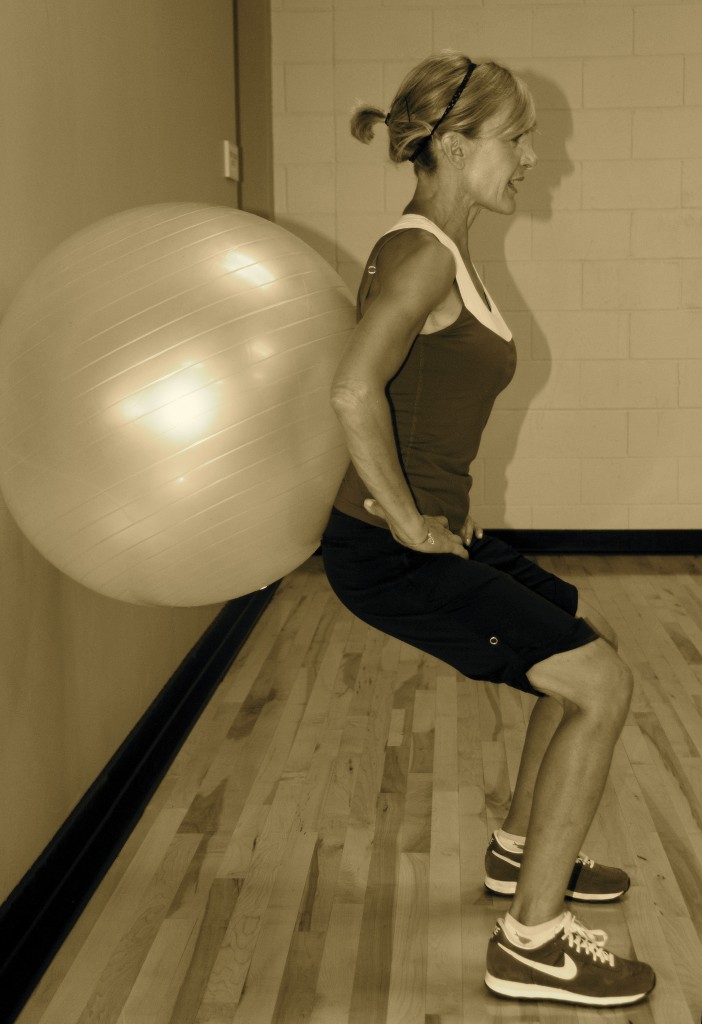 Nothing beats a great pair of legs. We need the strength of them to walk us through our lives. If you’re a skier, you can appreciate how hard your legs have to work on a powder day, as your hips and knees continually flex and extend. The lower body provides support and mobility for movement. The strongest muscles, for instance, the quadriceps, the front thighs, and your gluteals( posterior),  are powerful movers in most every sport. No matter what your activity of choice may be, it is a good idea to keep them strong with a simple traditional exercise: the squat.
Nothing beats a great pair of legs. We need the strength of them to walk us through our lives. If you’re a skier, you can appreciate how hard your legs have to work on a powder day, as your hips and knees continually flex and extend. The lower body provides support and mobility for movement. The strongest muscles, for instance, the quadriceps, the front thighs, and your gluteals( posterior),  are powerful movers in most every sport. No matter what your activity of choice may be, it is a good idea to keep them strong with a simple traditional exercise: the squat.
The movement seems simple enough: you “sit back “, as if you were to sit down a chair. Yet our bodies are a little more integrated than we think, as muscle is intertwined and inseparable from fascia. Rodney Corn, a biomechanics professor at the California University of Pennsylvania builds on the concept of how muscles are not islands by themselves. From the bottom of your foot, all the way up through your calf muscles, legs, hips, up to the top of your head is one continuous band of myofascia, transferring force from tendon to bone, all affecting each other. For example, the deep squat with the arms held overhead is used as a movement assessment tool, as every joint in your body has to work. Here is where muscle imbalances show up. For example, if your knees track inward or outward, it probably indicates that your gluts are weak, or the inner thighs are weak and tight, or maybe your heels come up off the ground, indicating very tight calf muscles. Overtime, these kinds of compensations can lead to injury. Be aware of alignment, even though the squat seems simple enough, before you start adding either heavy weights or variations of a squat, such as a walking lunge exercise.
How-to:
Stand with your feet hip width apart, with your toes pointing forward. Bend your ankles, knees and hips as if you were sitting back in a chair. The authors of Strength and Conditioning Journal December 2009 use the cue to “sit back into the squat.†Shifting your weight backwards not only reduces the torque on your knees by decreasing the angle, but also distributes the forces throughout the whole lower body, not just the front thighs. Pause for 1-2 seconds, tighten your gluts, and extend your legs fully back up to standing.
Sitting back in the squat can also prevent you from arching your back. By engaging the glutes, it becomes easier not to arch the low back. Keep your spine in a neutral position. The authors suggest that repetitive extension of the lumbar spine beyond the anatomical limit (arching) places stress in the small bones that join the facet joints in the back of your spine, called pars interarticularis. Keeping a neutral spine throughout the move increases stability through the spine and allows it to handle greater compressive loads. Once your movement patterns are ingrained, you can progress the difficulty of a body weight squat to ones that include free weights, weighted bars, kettleballs or medicine balls. The variations are numerous.
A shallow squat might be better for you if you have knee pain or patellar tendinous, because more than anything, strong quads will help in your rehabilitation.
Knee flexion and extension strength was recently measured in competitors in the National Senior Games. They had an average of 66% greater isometric knee flexion strength and 38% greater extension strength than control groups because of the demands of 20 or more years of competing, and loading the skeletal muscle. Other research, published in the Journal of Strength and Conditioning Research  Journal 2009 shows a 53% increase in leg strength after 6 months of resistance training in older men. The point is the basic squat is a good exercise to do. Stronger legs make for better days on or off the hill, or on the tracks this winter.
Connie Aronson is an American College of Sports Medicine Fitness Specialist located in Ketchum, Idaho
Printed in Idaho Mountain Express January 31, 2010
